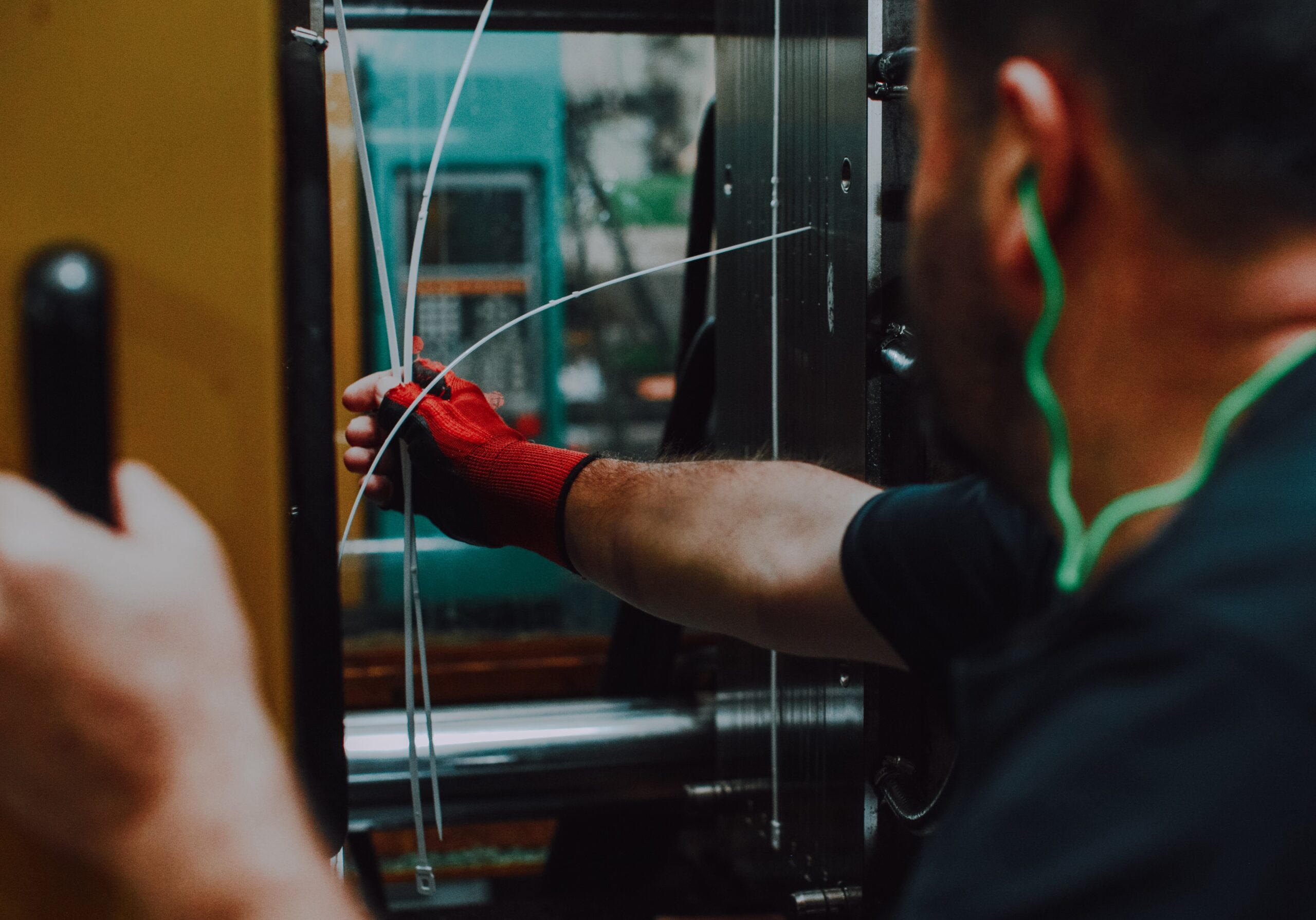Injection molding is a method of obtaining molded products by injecting heat-melted plastic materials into a mold, then cooling and solidifying.
Injection molding is the most widely used method for forming thermoplastics. Thermoplastics in powder or granule form are sent into the cylinder with the help of a funnel. The temperature of the cylinder heated by the heaters is adjusted according to the type of plastic material. The plastic material heated in the cylinder is transported towards the end of the cylinder with the help of a hydraulic piston or a spiral screw shaft. The molten plastic gaining momentum through the spreader fills the mold cavity. The plastic, which takes the shape of the mold cavity, is cooled. The mold is opened and the plastic part is removed.
Injection molding method; It is suitable for mass production of products with complex shapes and occupies a large place in the field of plastic processing. It is used in mass production processes where the same part is repeatedly created thousands or even millions of times.
The injection molding method is divided into 6 main steps as shown below:
Plastic Injection Cycle
1-Plasticizing
Melting the plastic raw material is the step of making it ready to be injected into the mold.
- In the first step, the screw rotates and granular raw material is taken from the funnel to the furnace.
- In the second step, the raw material is melted by heaters and screw friction.
- In the third step, the melted plastic reaches the screw cavity. The plastic accumulating in the screw cavity pushes the screw back. Back pressure opposes the screw going back.

2-Closing the Mold
The vise unit of the machine closes the two parts of the mold on top of each other and applies high pressure. It ensures the formation of the mold cavity between the two mold plates (male mold and female mold) and prevents the mold from opening against the applied high pressures and speeds.

3-Filling the Mold
- During the mold filling phase, the screw speed parameter is controlled. During filling, the temperature of the plastic material decreases, the viscosity increases and the injection pressure increases.
- In the first step, the screw is pushed forward by the hydraulic piston.
- In the second step, the molten plastic fills the mold cavity.
- And the pressure required to fill the mold chamber, the injection pressure and the internal chamber pressure increase.

4-Ironing
Ironing; It is the continuation of the injection process at different pressures and at a certain speed from a determined position in order to prevent shrinkage and burrs of the material pressed into the mold. The pressure is raised. It is ensured that the mold is completely filled and that fine details are formed.
5-Holding
To reduce shrinkage, the part is kept in the mold under pressure (Holding Pressure). As the part is pulled, new melt is filled inside. The holding phase continues until the runner inlet freezes.
6-Cooling
After the runner freezes, the part cools in the mold and shrinks. The cooling of the part continues until the vicat softening temperature is reached.

7-Demolding
The part is removed from the mold with the help of the pusher system.

Why Use Injection Molding Method?
The main advantage of injection molding is the ability to scale production in batches. Once the initial costs have been paid, the price per unit is extremely low during injection molded manufacturing. The price also tends to drop significantly as more parts are produced.
-High Efficiency & Fast Production
The injection molding method is extremely fast compared to other methods and the high production output rate makes it even more efficient and cost effective. The speed depends on the complexity and size of the mold. With the short time between cycles, more parts can be produced in a productive time, increasing possible revenue and profit margins.
-Low labor costs
Plastic injection molding is an automated process where the majority of the process is performed by machines and robots that a single operator can control and manage. It helps to reduce production costs as overheads are significantly reduced with automation.
-Design flexibility
It allows the production of complex designed parts.
– Wide selection of materials
Injection molding is the most used method for processing thermoplastic colours. More than one plastic material can be used at the same time.
-Low scrap rates
Injection molding produces very little post-production scrap compared to conventional manufacturing processes. Any waste plastic typically comes from spruce and runners. However, unused or waste plastics can be re-grinded and recycled for future use.
-Good color control
Plastic parts can be produced in desired colors with masterbatch or compound.
– Product consistency
Injection molding is a repeatable process; All products can be produced in the same size and quality .
Do n’t forget to read our other blog posts and visit our You tube page.

